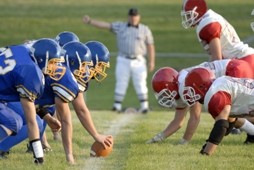
This old saying applies not only to sports, but to personal safety! But whereas most would think of how this applies to an impending physical attack, I would suggest rewinding the tape to the point-of-origin when/where the situation either began or began to escalate with the “potential” of becoming violent. There’s a paradigm shift for you.
How many times have you seen a report following a tragedy involving violence where you heard phrases like “I didn’t see ‘that’ coming” or “they just came out of nowhere” or similar. So are these ninja attacking us? No, when we rewind the tape we see/hear the “REST” of the story (Paul Harvey) where the person had been drinking, the person was distracted on the phone talking or texting, the person was putting things away in the car and not paying attention to those behind or around them, etc.
Let me be clear, I am NOT saying these people were at fault — at all! The only person or people to blame in such instances are the criminals who take advantage of such vulnerabilities — not the victims! All I am suggesting is that a proactive psychological posturing can help us mitigate such personal risks, taking us out of the cross-hairs of would-be predators seeking easy prey.
In this regard, the best offense means not simply environmental awareness, but situational awareness as well as personal awareness (each of which, to me, are stand-alone aspects). Situations and people must be evaluated continually. You cannot simply get out of your car, take a quick look around, and walk 50 yards through an obstacle course of other cars, oblivious now until you reach your inside destination. Forget being assaulted, you could end up a speedbump to someone’s poor (or distracted) driving! You have to be “continually” proactive, surveying your surroundings as well as those individuals coming in and out of your personal space.
This takes training for most, as the average person was not raised by parents who taught or instilled such skill sets unless someone possibly grew up in a military or law-enforcement home. And even then, periodic reminders and refreshers are a good idea.
You don’t have to take someone down to be offensive in your personal safety strategies, just be able to see ahead of the immediate moment, and think 1-2 steps ahead of a would-be attacker. That’s how you begin to “spot trouble ‘before’ trouble spots you!”
Need some help in this process? Head over to our Licensed Instructor page and see who we have that can help you in this process.
Jeff McKissack, Founder
Trouble Spotters